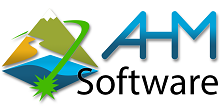How to run a webserver locally is up to the user. We provide an option to do so with a simple python script located in the bin directory of the HydroVish installation, which can be run as follows:
Note: Make sure you have Python installed. If you are using Windows and have an MSYS terminal, you can do this by running pacman -Syuu python.
If you don't want to use Python, there are more sophisticated options for running a webserver such as Apache. If this is used, it must be configured in a way that allows calling HydroVish via CG scripting.
Navigate to the link shown in your command line in a browser, e.g. http://localhost:8080/HydroVish.exe. You now have an instance of HydroVish/Nutria running in your browser.
This will automatically launch the interface.
To invoke HydroVish as command line tool via the Nutria API, the two environment variables REQUEST_METHOD and QUERY_STRING need to be set. Such can be done conveniently via a Makefile. However, a Query String is still needed, so until further development of an easier method, one must use the Web Interface to build the desired Query String.
The makefile will then look as follows:
export REQUEST_METHOD=GET
export QUERY_STRING=...
HydroVish=C:/home/myUser/vish/bin/win64/HydroVish
run:
$(HydroVish)
Where QUERY_STRING is followed by the Query String you've generated with the Web Interface or otherwise. It needs to be encoded according to the standard of the CGI. To encode a URl, there are tools such as urlencoder.org.
Save this as "Makefile", and run mingw32-make on the directory you saved it to.
Note: The paths in these sample makefiles are set relative to AirborneHydroMapping/HydroVish/data/SampleData/FWF, so you must have the SampleData downloaded with your HydroVish installer.
